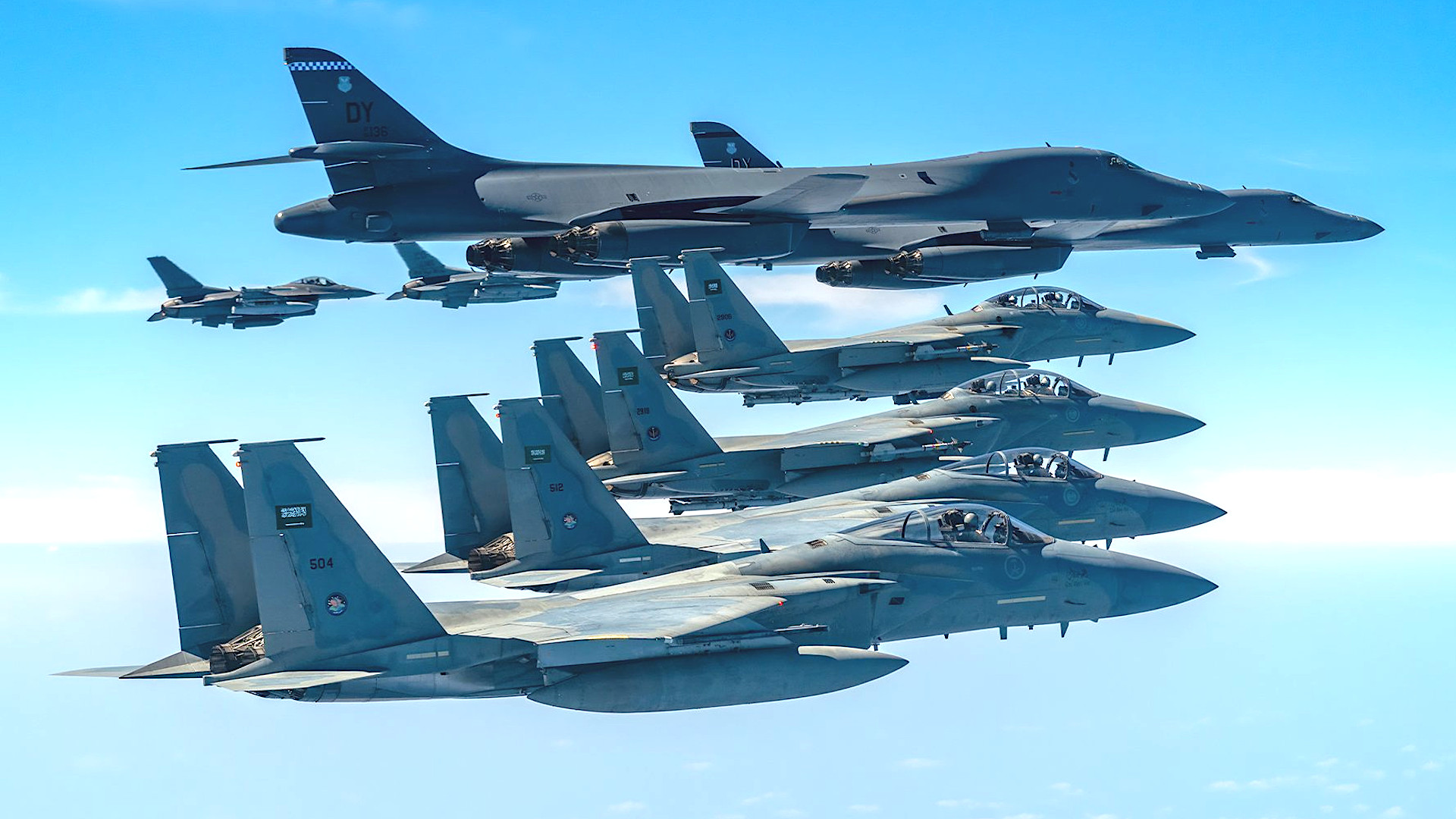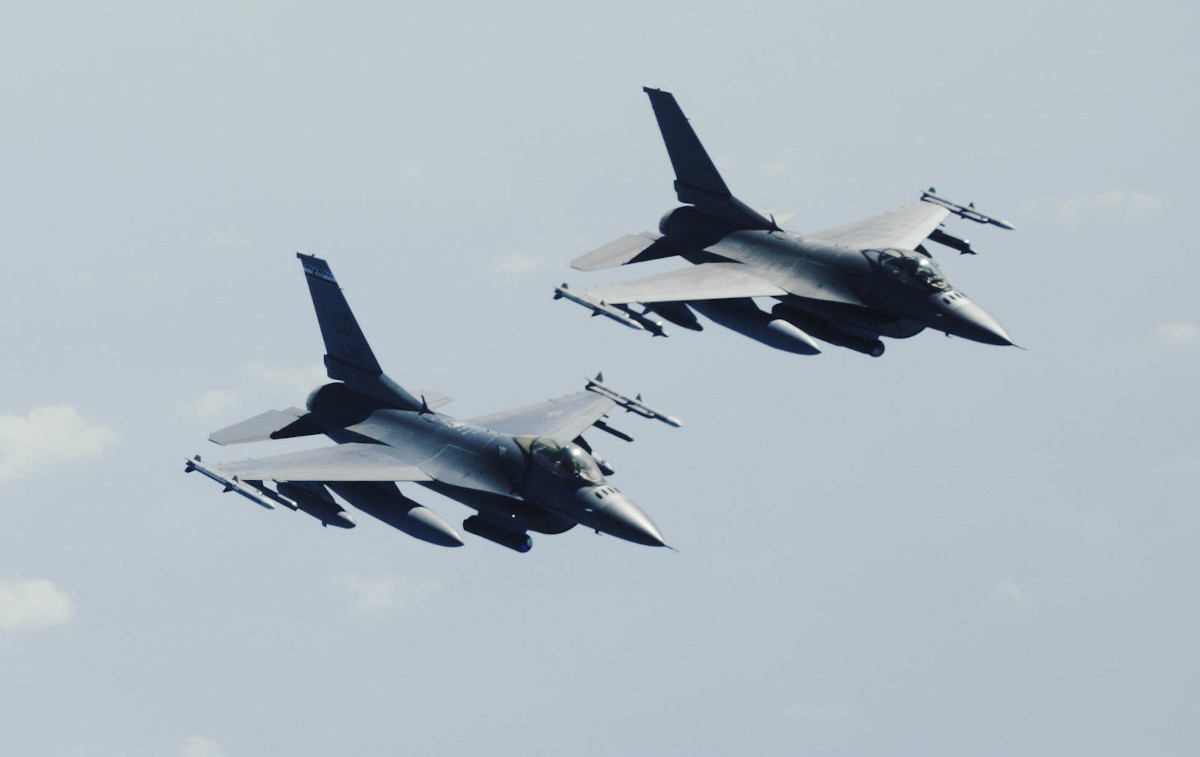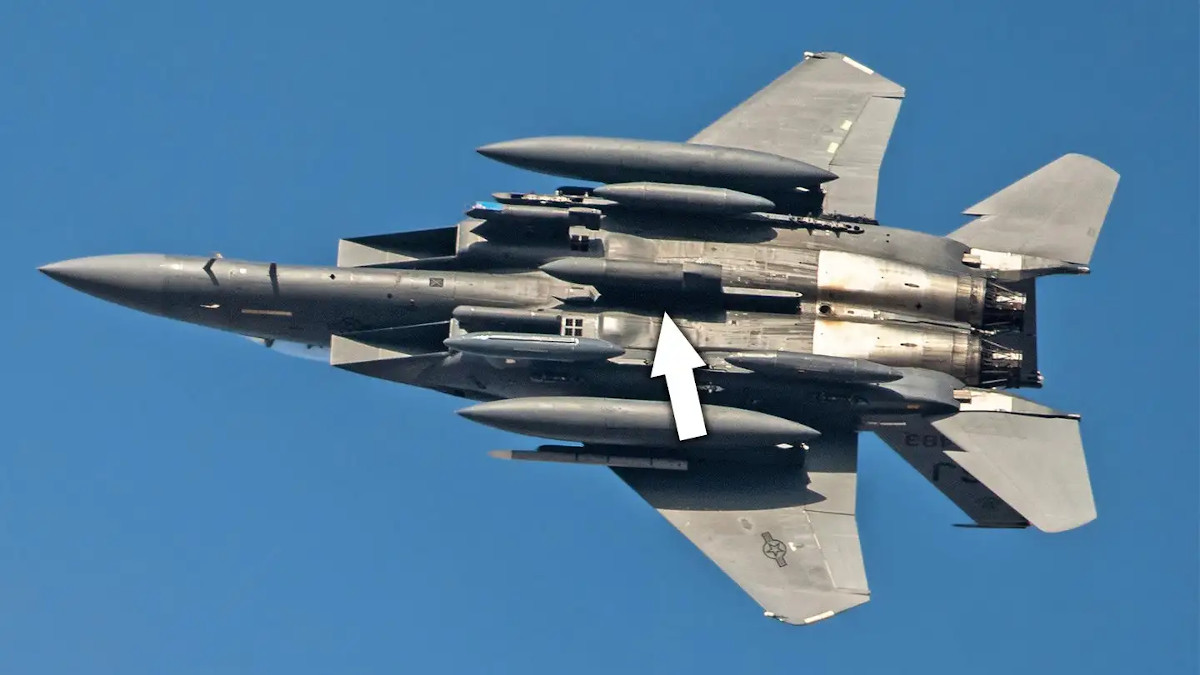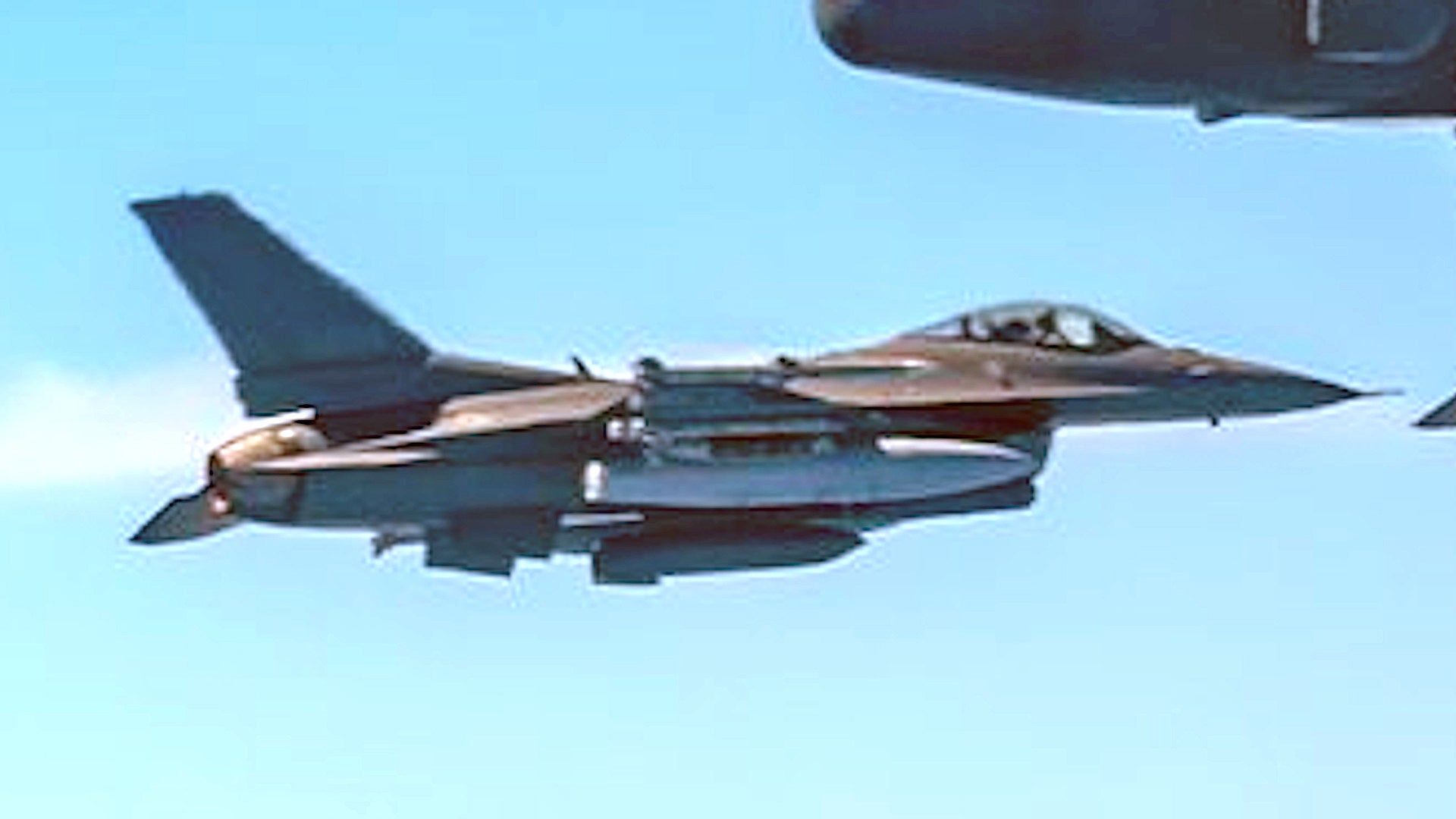A U.S. Air Force F-16C Viper fighter jet was spotted carrying an AN/ASQ-236 Dragon’s Eye radar pod during a recent sortie over the Red Sea with Air Force B-1B bombers and Royal Saudi Air Force F-15 fighters. This appears to be the first time this combination has been seen in the region and highlights how this pod, originally designed to be carried by Air Force F-15E Strike Eagles, has now become an operational tool for Air National Guard and Air Force Reserve Vipers. The pod offers a way to quickly give F-16s significant additional all-weather targeting and surveillance and reconnaissance capabilities when required.
A total of two F-16Cs, a pair of B-1Bs, and four Saudi F-15s flew together to demonstrate “commitment to partners and regional stability” yesterday, according to the Air Force. The Dragon’s Eye pod is visible underneath one of the Vipers in a picture from this mission that the Saudi Ministry of Defense released, a crop of which is seen at the top of this story and the full version of which is seen below. It’s not entirely clear what unit the Vipers belong to, but the Wisconsin Air National Guard’s 115th Fighter Wing sent some of these jets and around 300 personnel to Prince Sultan Air Base in Saudi Arabia for a scheduled deployment in October.

That the Viper in question belongs to an Air National Guard unit makes good sense. The Air Force announced in September 2020 that at least 200 F-16C/Ds in the Air National Guard and Air Force Reserve had been upgraded to be able to carry this radar pod. Work to integrate Dragon’s Eye onto these jets dates back to at least 2018.

Dragon’s Eye is a powerful sensor system that has an active electronically scanned array (AESA) radar at its core that is capable of being rotated around the pod’s center axis. The pod also contains geo-positioning and cooling systems. The radar has synthetic aperture functionality allowing it to produce high-fidelity imagery of a large area and is said to be sensitive enough to detect small and even shallow-buried objects, such as individual people and improvised explosive devices. It reportedly has ground-moving target indicator (GMTI) capabilities, as well, giving it the ability to track moving vehicles and ships below. What this all means is that system can be used to conduct general intelligence, surveillance, and reconnaissance (ISR) missions and collect targeting data for actual strikes, all at extended ranges and in any weather conditions.

This is hardly the first time that Air Force aircraft have been seen carrying the pod in the Middle East, but previously it had been almost exclusively associated with the F-15E. The service’s F-15E fleet is small compared to how many F-16s it has, and the Strike Eagles are in high demand. So enabling Vipers to carry Dragon’s Eye expands the total number of platforms that can carry the system, offering greater operational flexibility, on top of just giving individual jets a major boost in capability.
Many Air National Guard F-16C/Ds are separately in the process of receiving new, highly capable AN/APG-83 Scalable Agile Beam Radars (SABR), another AESA type. Pairing Dragon’s Eye and SABR together would produce a very impressive set of capabilities, though it’s not clear if this particular Viper carrying the pod over the Red Sea yesterday has a new AN/APG-83.

The focus of this mission yesterday appears to have mostly been about highlighting partnerships between the U.S. military and its Saudi counterparts. The Red Sea is a highly strategic body of water where the Dragon’s Eye pod could have real operational utility. It lies between two major chokepoints, the Suez Canal to the North and the Bab Al Mandeb Strait to the south. An accident involving the container ship Ever Given left the Suez Canal blocked off for six days earlier this year and underscored how even relatively short disruption of commercial shipping in this region could have major negative economic impacts worldwide.
Accidents aren’t the only potential threats to unfettered maritime movement and general security in this part of the world. Iranian-backed Houthi militants in Yemen regularly launch attacks on commercial interests in Saudi Arabia, including against ships in the southern Red Sea and facilities along the coast there, in addition to military targets. There have been concerns in recent years that this group, and Iran itself, may be expanding its ability to strike farther north, including at targets in southern Israel. Iran, or at least proxies acting on its behalf, have launched a number of attacks on commercial ships in the Middle East in recent years, including vessels tied to Israel as part of a maritime shadow war those countries have been waging against each other.
F-16s with Dragon’s Eye pods would be able to help keep an eye out for potentially hostile activity in and around the Red Sea, as well as help execute strikes on threats that pop up and conduct damage assessment after any such operations. The AN/ASQ-236 presents a particularly ideal tool for spotting and targeting small boat swarms, no matter what the weather down below might be like. Iran and its proxies routinely demonstrate how swarms of small boats are a very real threat in the region, as is highlighted in the video footage below from a recent altercation in the Gulf of Oman.
Flying from Prince Sultan Air Base, which is situated in central Saudi Arabia closer to the Persian Gulf, Vipers with these radar pods could perform similar missions elsewhere in the region, which has no shortage of potential hotspots.
With hundreds of Air National Guard and Air Force Reserve Vipers now capable of carrying Dragon’s Eye, seeing jets in the Middle East, as well as other locales, will likely only become ever more routine.
Contact the author: joe@thedrive.com
